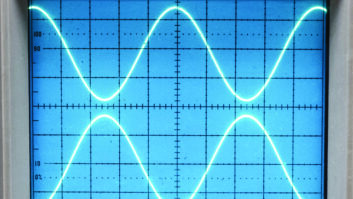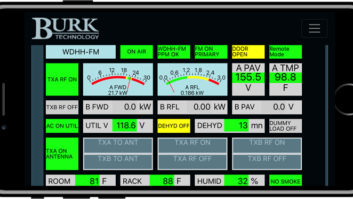Lightning has occurred on earth much longer than man has been around. Because of this, an aura of mystery and misinformation has evolved that continues to mislead us today. The idea that man can do nothing to prevent or divert a lightning strike is a popular misconception. In most cases, lightning can be safely diverted or better yet prevented from striking. With all the mysticism stripped away, science clearly explains the causes and functioning of lightning. Let’s review the current best practices to mitigate lightning damage.
Ben Franklin
The Franklin lightning rod was introduced more than two and a half centuries ago. Franklin was not at first looking to invent a device to capture lightning. He simply wanted to understand electricity in all forms. From his experiments and observations, he wrote a paper titled, On the Sameness of Lightning and Electricity. A friend presented this paper to the Royal Society in London. Their response was laughter and derision. However, within a decade they had to acknowledge that Franklin was right.
Scientists of this era were limited to storing electrical energy in a Leyden jar in the form of high voltage. The source of the voltage was primarily friction between various materials, such as shoe soles and nylon carpet. They soon learned that if the connection to the Leyden jar was in the form of a wire, it soon discharged itself into the surrounding air. To retain the charge, they learned to place a sphere often called a corona ball onto the end of the wire. A sharply pointed wire discharged the energy rapidly while the corona ball retained it. As the sphere became larger and larger in diameter, higher and higher voltages could be retained for longer periods of time.
Franklin observed that electricity actually flowed out into the air in this discharge, which he defined as a silent current. His idea for the lightning rod derived from this observation and his conclusion that that the “electric” in the area would be discharged via one or a few sharply pointed rods. Because the nature of electric current was not yet fully understood, he could not realize that each sharp point is limited to discharging just a small value, typically a few milliamperes. As a result, when the lightning rod industry developed during the 19th century, lightning rods were intended to intercept a strike and then conduct it to ground through a thick wire.
Early streamer
A relatively recent outgrowth of the Franklin rod is the ESE (early streamer emission) device. If a stream of ions is emitted from a sharp, elevated point, an upward streamer will occur in the powerful electric field accompanying a thunderstorm. An upward streamer is the normal means that initiates a lightning strike. In most cases, the streamer is positive in polarity while the cloud bottom is usually negative. When the field voltage is great enough, the upward streamer attaches to a downward negative streamer from the cloud.
Early ESE devices used a small amount of radioactive material to initiate the flow of ions into the air. However, because of concern over the radiation, ESE devices now contain a small, high-voltage source that initiates a stream of ions from a sharp, elevated point. These devices are quite popular in Europe and parts of Asia.
Some scientists have written that their effectiveness is questionable, claiming that the wind associated with most thunderstorms blows the ion stream away faster than it can be generated and flown upward.
Measuring the energy
The third method is predicated on the fact that a lightning strike is not inevitable. To understand it requires a study of the science behind a strike. For many years it was assumed that an average strike releases a massive quantity of energy. However, it has been learned over the last several decades that the quantity of charge (in coulombs) is relatively small. The reason a lightning strike is so damaging is because the energy in the lightning strike is delivered in an extremely short time period.
A coulomb is a unit of charge and may be simply defined as one ampere for one second. A coulomb is also defined as a specific number of electrons, regardless of voltage, current or anything else (approximately 6.24 x 1018> power electrons). Early researchers assumed that a lightning strike must contain thousands of coulombs of charge. Today, instrumentation is available that can measure the voltage and the current of a strike as well as the length of time the strike current flows. These values can vary widely in individual strikes, but the one that is most important is the length of time the strike current flows. A typical strike lasts from about 10 to 50 microseconds; although multiple strikes can occur down the same ionized channel until the charge is depleted.
From accurate measurements, it is now known that a typical strike contains less than 100 coulombs, but just how much charge is this? What is a practical application of a coulomb? If we have an ordinary light bulb rated at 100W and 100V, the charge traveling through it each second will be one coulomb. Based on this voltage and power, a current of one ampere will flow. This means one coulomb per second or 60 coulombs in one minute. This value falls within the range of a typical strike. If this is true, how can this relatively small charge do so much damage?
One analogy is a sledgehammer driving railroad track spikes. If a very strong man simply holds the sledgehammer atop a spike and pushes down as hard as he can, the spike will not be driven into a railroad tie. On the other hand, if the same man swings the sledgehammer rapidly, the spike will be partly driven into the tie. Several swings and the spike will be fully driven into the railroad tie. The length of time is the main factor. The inertial energy in the sledgehammer head is transferred into the spike in a very short time. This is analogous to the damage done by a lightning strike. Because the time frame is so short, the nearly instantaneous current within a strike is very high, but the charge (coulombs) lowered to earth is relatively small.
Previously, it was mentioned that the current emitted by a single, sharp elevated point is limited to a small value. This is why Franklin’s rod seemed to be a failure and was later relegated to the task of directing a strike down to ground. However, when many sharp points are elevated, each point contributes a small current so that the total amount of current can be greatly increased. Because the charge in coulombs is a relatively small value, the energy can be dissipated faster than can be accumulated to initiate a strike. It is not necessary to completely discharge the electric field.
As the electric field associated with the onset of a thunderstorm builds from the ground up, the first ionization potential of the air (about 7 to 8kV) is reached and conduction of current from each sharp point begins. Because the field voltage is rated in volts per meter, the higher the points are elevated the sooner they begin to discharge the electric field. If the field voltage can be kept below the value required for a strike, the strike may be prevented from happening. It is not necessary to discharge the field voltage completely to zero.
Massive energy?
Technically, a lightning strike does contain a massive quantity of energy, but the energy it contains is released in an extremely short time. The damage is done because of the instantaneous release of a relatively small quantity of electric charge. Because of these facts, a lightning strike is not inevitable. It can be prevented by practical application of scientific principles. The charge can be discharged harmlessly into the air slowly. We can take advantage of this principle to protect towers, antennas, transmission equipment and any tall structure.
In the past, this method has been called dissipation. A better description would be “field discharge” because this is what happens when large numbers of sharp, conductive points are elevated in the proper geometric distribution. The electric field voltage is diminished by this conduction just as a capacitor is discharged by a “bleeder” resistor placed across its terminals. A storm cloud above the earth forms a giant capacitor with the surface of the earth. If the voltage gets high enough, the dielectric between the plates (cloud bottom and earth surface) breaks down and instantaneous discharge occurs.
If you are concerned about lightning damage, you should review your basic understanding of lightning strikes. Get rid of the misconceptions from thousands of years past and get a good understanding of the scientific principles behind the sources of a lightning strike. Lightning damage can be greatly reduced or eliminated by simply partially discharging the electric field that initiates a strike. Remember, it is not necessary to completely discharge the electric field. It is only necessary to decrease the field voltage below that required (about 10kV per meter of elevation) for a strike. You may not be able to part the clouds, but with the proper application of these simple scientific principles, you can prevent lighting strikes.
[Ed. — The author gives credit and thanks Mike Langner and Sumant Krishnaswamy, PhD, for their invaluable assistance.]
More on Field Discharge
The field discharge method works because of f(t). Here’s a brief math lesson.
First, we’ll define coulomb (unit of charge): One ampere for one second. It is a specific quantity of electrons (6.24 x 1018). Voltage is immaterial. It is not a factor in the coulomb. Whether this quantity of electrons is being pushed along by one volt or 1,000 volts, the number of electrons remains the same. The actual charge transferred by a lightning strike is described by scientists in coulombs.
Consider a 100W light bulb on a 100V supply. Because the current for this bulb would be 1A, in one second it uses 1 coulomb of charge to provide light. In each additional second, it transfers another coulomb of charge through the light bulb. Remember that the coulomb is not dependent on voltage. Lightning scientists say that a typical lightning strike transfers about 10 to 70 coulombs of charge in about 30 to 50 microseconds. Not a big charge, but it is compressed into a very short period of time (this translates into about 200,000 to 1,000,000 amperes). That’s why a strike does so much damage. Yes, the voltage and current are both very high, but the fact that it occurs in such a short length of time is why it can be so damaging.
The importance of f(t)
Recall studying functions in high school math. We started with f(x), but here we use f(t) for time.
Compare MW hour, kW hour, watt hour, watt minute, watt second. Each is a function of time f(t). But if we cram 1kWH of energy into one minute in time, what is the equivalent energy rate?
How much power would this be in one minute? 60 x 1kW = 60,000 watt hours = 60kW rate
If we cram this energy into one second, what is it equivalent to in kW? 60 x 60,000 = 3,600kW rate
Into 0.1 second = 100,000 microseconds is equivalent to 10 x 3,600,000 = 36 MW rate
Into 0.01 second = 10,000 microseconds is equivalent to 10 x 36,000,000 = 360 MW rate
Into 0.001 second = 1,000 microseconds is equivalent to 10 x 360,000,000 = 3,600 MW rate
Into 0.0001 second = 100 microseconds is equivalent to 10 x 3,600,000,000 = 36,000 MW rate
Into 0.00005 second = 50 microseconds is equivalent to 10 x 36,000,000,000 = 72,000 MW rate
In other words, if a strike carrying charge of one coulomb every 50 microseconds continuously discharged for an hour, it would transfer 72,000 megawatt hours of energy to ground in that hour.
Clearly, a lightning strike is a function of time as well as voltage and current.
If we can discharge the same energy over just a few minutes, the current would be very small. Damage from lightning is the result of a huge amount of current for a very small period of time, not from a massive discharge of energy.
Nott is director of research and development for Nott Ltd.










